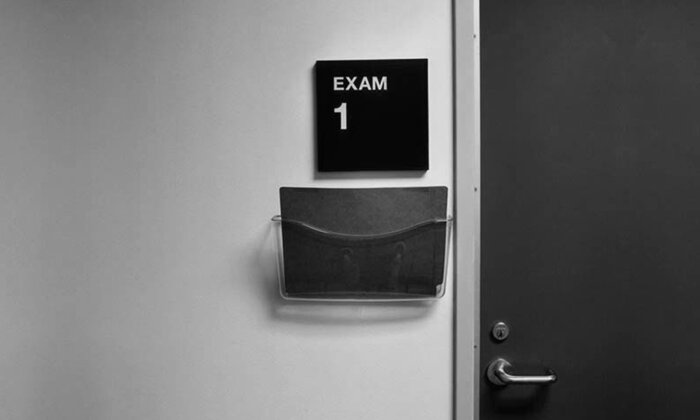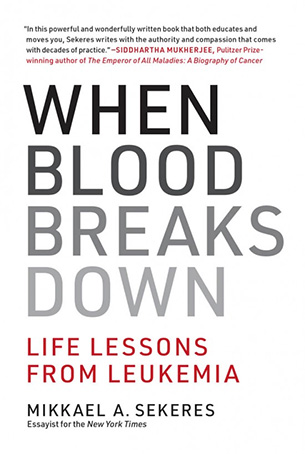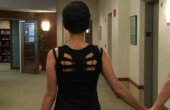The Doctor Is In, but Scared to See You

On my first day of work at the hospital I just joined, the administrator of the doctors’ schedules asked me if I would be seeing patients in clinic or by telehealth. It was early January, in the midst of a Covid-19 surge. By that point, most of my colleagues had already received their first vaccine shot. I got mine that afternoon — I called it my starting bonus.
“Oh, I like to see my patients in person,” I told her. “They all need to have labs drawn anyway, and many receive blood or platelet transfusions, so they’re already here at the cancer center.”
As a specialist in leukemia, assessing blood counts in my patients is even more essential to me than most aspects of the physical exam. Laying eyes on them, seeing how my patients are functioning and caring for themselves, is equally important.
While the advantages of telehealth have been touted, my experience has been different.
While the advantages of telehealth, including improved accessibility for patients and job satisfaction for doctors, have been touted, my experience has been different: I’ve learned that a flat-screen monitor, an image on a Zoom call, can only reveal so much about a person’s well-being — if that person can even navigate the technology hoops to make it to our appointment, which doesn’t always happen. I’ve also felt isolated from the very patients who inspire me to do my work.

“Aren’t the other doctors seeing their patients in clinic?” I asked the administrator.
She looked at me funny. “Not everyone.”
For months now, doctors have been encouraging patients to return to clinics and hospitals despite the viral pandemic to receive routine medical care, undergo cancer screening, and for cancer therapy. We have been worried about the untoward consequences of delays in diagnoses and treatment of these other serious medical conditions, and have reassured patients that they will be safe — that we won’t infect them with Covid-19.
Yet based on my conversations with nurses and physicians, many, even those already vaccinated, still fear catching the virus from the people they care for and are reluctant to leave the comfort of telehealth to see patients in person: They have developed patient hesitancy. Hospital leaders haven’t done as good a job reassuring them that they will be equally safe providing care to their patients.
Their fears are, of course, understandable. Some healthcare providers have friends in health care who have gotten critically ill with the virus, or have read the CDC analysis that reported 6 percent of adults hospitalized with Covid-19 in the U.S. worked in health care; 27 percent of them were admitted to intensive care units, and 4 percent died. Whether these health care workers contracted Covid-19 from patients or from activities outside the hospital is not known. These percentages, though, of those on the front lines of the pandemic who have fallen ill, are scary.
Others have received inconsistent advice about what personal protective equipment (PPE) will keep them safe around patients either with known Covid-19 infections, or who might be infected. Some hospitals require N-95 masks, face shields, gloves, and disposable gowns for workers providing care to patients with Covid-19 on some hospital floors, but just a single surgical mask and a face shield or goggles on others. I was offered the former to see patients in clinic at my new job, but for months was told that just a single surgical mask and no lab coat would suffice at my former hospital’s clinic.
It’s hard to know whether that advice was to the best of our knowledge at the time, or reflected insufficient quantities of appropriate PPE.
And some health care providers, themselves over the age of 65 or with medical conditions that place them at high-risk for poor outcomes with Covid-19, have decided to not roll the infection dice by seeing 20 patients a day in clinic, turning instead to telemedicine exclusively.
At my former hospital, where instructions on whether or not to work from home or provide distance health, or to be present at the hospital, amounted to a “don’t ask, don’t tell” policy, one older faculty member was terrified of catching Covid-19 and barricaded himself in his office to “see” patients in clinic or in the hospital only via his computer. At my current hospital, where working from home and telemedicine were encouraged, more doctors took advantage of that option. Now, some are reluctant to return.
I talked with one hematologist, a man in his 70s, about it recently. I asked him if he was ready to come back to clinic and to hospital rounds to see patients in person again, now that he (and all of our colleagues) had received a second vaccine shot.
I rejoice in seeing my own patients in person again, now that I’m vaccinated, and truly believe we aren’t in danger of infecting each other.
“I suppose so,” he said a bit uncomfortably, and shifted in his chair. We were chatting over Zoom, and I could see some seagrass outside the window of his home behind him, with the ocean beyond that. “But you know, the vaccines aren’t 100 percent effective. And they may not work as well against the variants….” He trailed off.
It may take a bit of time, but I suspect he and my other colleagues will come around. We’re now receiving clear and consistent messaging from the CDC and other government agencies about the durable efficacy of the vaccines, leading to a relaxing of guidelines about gatherings for vaccinated people. The vaccines actually appear to work quite well against viral variants, despite the initial worry that they wouldn’t (leading some to refer to these viral mutations as “scariants.”) And we’ve all become much more adept at determining the appropriate PPE to don in hospital and clinic settings, keeping us (and our patients) truly safe.
I rejoice in seeing my own patients in person again, now that I’m vaccinated, and truly believe we aren’t in danger of infecting each other. I also think I provide better care. I suspect before long, he and my other trepidatious colleagues will, too.
Mikkael A. Sekeres is the Chief of the Division of Hematology in the Department of Medicine at the Sylvester Comprehensive Cancer Center at the University of Miami. He is the author of “When Blood Breaks Down” and a frequent contributor to the New York Times’ Well blog.



